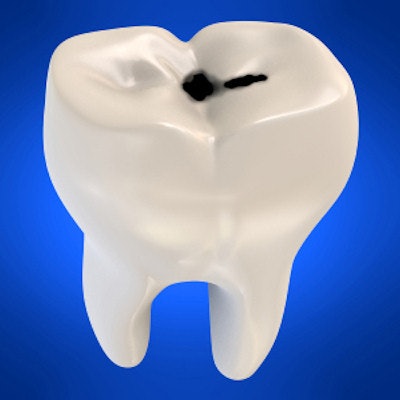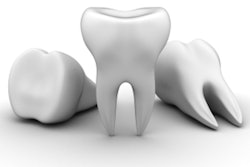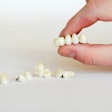
Atraumatic restorative treatment (ART) was developed to treat caries in children living in areas where electricity, trained healthcare workers, and care facilities are limited. While the treatment is minimally invasive, how effective is it? A new review looked at the evidence.
Researchers analyzed 15 randomized controlled trials and found low-quality evidence suggesting that primary teeth treated with the ART approach using high-viscosity glass ionomer cement may be more likely to result in restoration failure, compared with teeth receiving conventional treatment with the same material. The review was published in the Cochrane Database of Systematic Reviews (December 28, 2017)
"Although there is some evidence in favor of conventional treatment rather than ART in primary teeth, ART may still be considered as a treatment option where access to resources (e.g., dentists, rotary handpieces, and electricity) are limited," wrote the group led by Mojtaba Dorri, DDS, PhD, a clinical lecturer in restorative dentistry at Bristol Dental School in the U.K.
Serious concerns
Dental caries is perhaps the most prevalent disease in the world and is considered the most important treatment burden in oral healthcare. Conventional treatments require trained personnel, electricity, and specific equipment (such as a handpiece); however, the ART technique involves the removal of decayed tissue using hand instruments, usually without anesthesia, and restoration of the cavity with an adhesive material, such as a glass ionomer cement or other material.
“ART may still be considered as a treatment option where access to resources ... are limited.”
The researchers sought to assess the effects of ART compared with conventional treatment for managing dental caries lesions in the primary and permanent teeth of children and adults. They included only randomized controlled trials with at least six months of follow-up.
The group found 15 eligible studies published between 2002 and 2016, with a total of more than 3,700 participants. The age of the participants ranged from 3 to 101 years, with a mean of 25.42 years. More than half of the participants were female.
Eleven of the studies looked at the effects of ART only on primary teeth, while the rest focused on permanent teeth. Follow-up ranged from six months to 36 months. The researchers noted that they found all of the studies to be at high risk of bias.
Out of the 15 studies, the researchers identified five low-quality studies that compared ART with treatment using high-viscosity glass ionomer as the restorative material. They wrote that ART may increase the risk of restoration failure in the primary dentition. These studies had follow-up periods ranging from 12 to 24 months.
"Our confidence in this effect estimate is limited due to serious concerns over risk of performance and attrition bias," they wrote.
However, the researchers also concluded that, based on a separate low-quality evidence study with 40 participants, ART may reduce pain during the procedure, compared with conventional treatment.
As for other restorative materials, studies that compared ART with conventional treatment did not provide consistent results, according to the researchers. The results of these studies for pain were also inconclusive.
Uncertain effects
Besides the lack of studies with high-quality evidence, the researchers also noted that no studies reported on adverse events or costs. In addition, five of the studies were funded or partially funded by manufacturers.
They concluded that well-designed randomized controlled trials are required that report on restoration failure at clinically meaningful time points, as well as participant-reported outcomes such as pain and discomfort.
"The effects of ART using composite and [resin-modified glass ionomer cement] are uncertain due to the very low quality of the evidence and we cannot rely on the findings," the group concluded. "Practitioners and patients should interpret these results with caution."



















